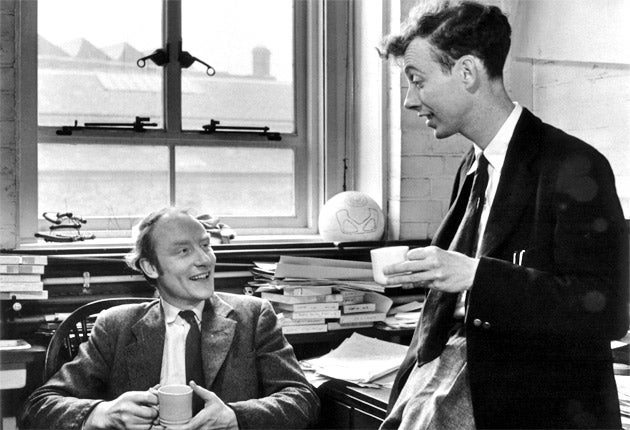How Crick and Watson's DNA lab was a hive of genius – and sexism
Letters dismiss influence of female colleague as 'witchcraft'

A batch of "lost" letters written 50 years ago has cast new light on the intense and sometimes bitter rivalries behind one of the greatest achievements of the scientific age – the discovery of the DNA double helix.
The newly uncovered letters, which were thought to have been thrown away by accident, reveal the extent of the distrust between the key figures involved in the discovery, with one academic referring to a female colleague's influence as the "smoke of witchcraft".
The lost correspondence of Francis Crick, who built the first three-dimensional model of DNA with his Cambridge colleague Jim Watson, was found mixed up with the personal archives of Sydney Brenner, a scientist who shared an office with Crick between 1956 and 1977.
Some of the most interesting letters are between Crick and Maurice Wilkins, who led a rival group of scientists at King's College London which was also trying to unlock the then-mysterious structure of DNA, which provided the groundwork for modern molecular biology.
Crick and Wilkins had become close friends even though they were both competing for the DNA prize. However, Wilkins had fallen out badly with his co-worker Rosalind Franklin, who had taken the crucial X-ray images of DNA crystals that eventually led Watson and Crick to the idea of a double helix.
Crick and Watson originally built a triple-helix model of DNA based on a misinterpretation of Franklin's work by Watson. This embarrassing blunder led to growing distrust between Franklin and the Cambridge duo, and she did not want either of them to attend the last colloquium she was to give at King's before leaving for another lab.
In one letter in January 1953, just
before the publication of the key scientific paper on the DNA double helix, Wilkins tries to explain to his friend Crick why he and Watson cannot come to Franklin's talk. "I got a big notice saying it was internal only – just a discussion between colleagues who worked in the same lab," Wilkins wrote.
"Let's have some talks afterwards when the air is a little clearer. I hope the smoke of witchcraft will soon be getting out of our eyes," he added, referring to Franklin's imminent departure. As a postscript, he writes: "Tell Jim the answer to his question 'when did you last speak to her' is this morning. The entire conversation consisted of one word from me."
Alexander Gann and Jan Witkowski, researchers at the Cold Spring Harbor Laboratory in New York, where the Brenner archives have been deposited, write in the current issue of Nature that the "witchcraft" line is likely to find its way into the canon of well-known allusions to Franklin, who had already been described by Wilkins as the "dark lady" of DNA.
After Wilkins had shown Watson an X-ray image of DNA taken by Franklin months earlier, the Cambridge duo quickly rebuilt their DNA model as a double helix. After the scientific paper was published in April 1953, Wilkins wrote: "To think that Rosie had all the 3D data for nine months and wouldn't fit a helix to it and there was I taking her word for it that the data was anti-helical. Christ."
Crick, Watson and Wilkins shared the Nobel Prize in 1962 for their discovery of the DNA double helix. Franklin died of cancer in 1958, aged 37.
Subscribe to Independent Premium to bookmark this article
Want to bookmark your favourite articles and stories to read or reference later? Start your Independent Premium subscription today.

Join our commenting forum
Join thought-provoking conversations, follow other Independent readers and see their replies